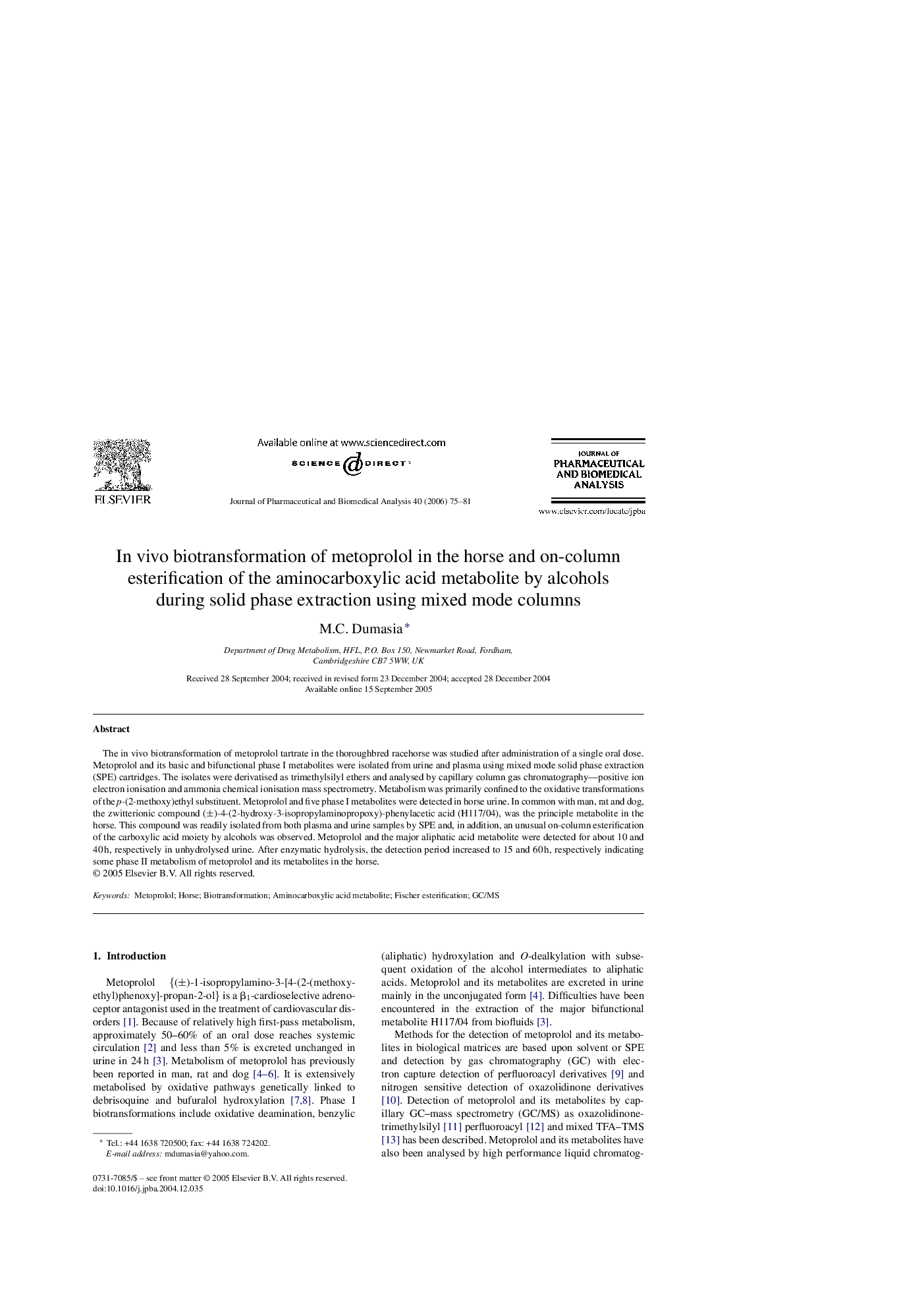| Article ID | Journal | Published Year | Pages | File Type |
|---|---|---|---|---|
| 1224749 | Journal of Pharmaceutical and Biomedical Analysis | 2006 | 7 Pages |
The in vivo biotransformation of metoprolol tartrate in the thoroughbred racehorse was studied after administration of a single oral dose. Metoprolol and its basic and bifunctional phase I metabolites were isolated from urine and plasma using mixed mode solid phase extraction (SPE) cartridges. The isolates were derivatised as trimethylsilyl ethers and analysed by capillary column gas chromatography—positive ion electron ionisation and ammonia chemical ionisation mass spectrometry. Metabolism was primarily confined to the oxidative transformations of the p-(2-methoxy)ethyl substituent. Metoprolol and five phase I metabolites were detected in horse urine. In common with man, rat and dog, the zwitterionic compound (±)-4-(2-hydroxy-3-isopropylaminopropoxy)-phenylacetic acid (H117/04), was the principle metabolite in the horse. This compound was readily isolated from both plasma and urine samples by SPE and, in addition, an unusual on-column esterification of the carboxylic acid moiety by alcohols was observed. Metoprolol and the major aliphatic acid metabolite were detected for about 10 and 40 h, respectively in unhydrolysed urine. After enzymatic hydrolysis, the detection period increased to 15 and 60 h, respectively indicating some phase II metabolism of metoprolol and its metabolites in the horse.
